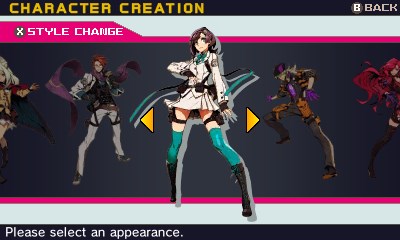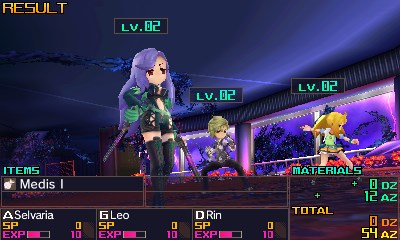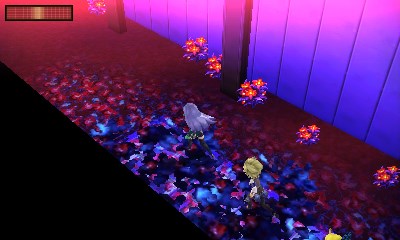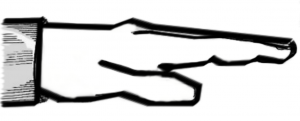[Review] 7th Dragon III Code: VFD
Posted on July 7, 2016 by Dennis Gagliardotto(@LyonHart_) in 3DS, Reviews
System: 3DS
Release date: July 12, 2016
Developer: SEGA
Publisher SEGA
Over 80 years have passed since the terrible events of the year 2020, where Tokyo was left severely dilapidated by the vicious attacks of Dragons. To some, it is just a legend, seeing as there weren’t very many survivors. But to others, it is a very serious issue in which an organization known as ISDF want to prevent future attacks, as well as travel through time with the help of some trainees who win a Dragon-hunting simulation contest to put a stop to these monsters for good. In a world where Dragons were thought to be practically extinct, Tokyo gets a very bad wakeup call in which no more time can be wasted. With eight classes and a variety of moves and teams to make, 7th Dragon III: Code VFD puts you in charge of ridding the world of these Dragons and saving humanity once and for all.
7th Dragon III puts a big emphasis on its ability to have you customize your team “heavily” so you can strategically make your way through the game and its multitude of dungeons by having eight classes to pick from, but only three you can have in battle at a time. These classes can be changed at any given point in one of its various hub worlds to take advantage of certain situations, but I couldn’t help but feel like this was a mechanic that was added for the sake of having the player feel more personalization or making the game feel deeper than it actually is.

I went through a significant portion of the game simply with a Duelist (this Yu-Gi-Oh!-inspired class uses cards to summon monsters to fight by your side, as well as putting battle-hindering effects – ala trap cards – such as spikes on the ground that damage the enemy whenever they engage you), a God-Hand (these guys tend to be quick, swift, and deal a decent amount of damage, while also having the ability to heal themselves and party members without the use of items), and an Agent (Agents utilize hacking and projectile weaponry to both defend and give the overall team an upper-hand in battle. By various methods of hacking, you can, in one case, confuse the monsters by thinking they are the enemy and having them attack each other for a few turns, or gain data on them for higher chance of critical hits.) The only reason why I ended up changing much later into the adventure wasn’t even because I couldn’t progress or wasn’t doing significant damage. Instead, it was only due to the fact that I simply became bored of what I was using and wanted to change it up a bit.
The character creation aspects don’t really give you much to choose from, despite the 8 classes, 32 appearances in total, and 40 voices. Reason being, starting with the classes, is that each class only has two “styles” that alter the design of both the male and female of the class. Both styles usually look similar, with the separate “appearances” only being that you can change the color of the clothes. Colors usually have three variants, each of which isn’t particularly exciting or noteworthy. The various voices you choose from are only meant for in-battle grunts, and smaller occasions in which no actual voice acting is conducted. The game is mostly your standard text-based adventure, so having a copious amount of voices to choose from just for a few “unghs” and “hiyah”s seems overdone, and put mainly to be a selling point for character customization, despite its lack of influence to the characters and the game.
Poor customization and uninspired classes aside, the gameplay itself is fairly easy to get into and fun, which is always what’s most important. 7th Dragon III: Code VFD does a great job at making locations, items, and much more pretty easy to find with the map on the lower touch screen of the 3DS, while supplying intriguing dungeons and hub worlds to go through each with its own theme and aesthetic, mostly very pretty to look at, despite its linearity; most if not all dungeons basically require you to go up a flight of stairs until you reach the boss for that level. There are save points placed sporadically throughout, as well as health orbs that heal your party back to full health as you pass through it. These have unlimited uses and are convenient in some of the more challenging situations, however these health and save points tend to be few and far between, but reasonably so.

The design of the dungeons feel tedious at points, though never enough where it’s unreasonable. The more seasoned RPG players should be fine going through and surviving the dungeons without dying, however those less inclined may find it cumbersome and in some cases downright frustrating.
In the upper left hand corner the upper 3DS screen, you have a light meter which gradually changes from green, meaning no enemies close by, to red, meaning a battle is imminent. The meter that notifies you when a battle is another part of 7th Dragon III: Code VFD that feels unnecessary and useless to me – reason being that it seems that it is always tuned to trigger a battle after a fixed amount of steps, location and speed having no influence whatsoever. Due to this, it becomes a blunder to constantly look at and would have benefited from just not being there. If your party was low on health, and say you saw the light turning red, wouldn’t it make sense that when you turned away from that direction that the light would ease up a bit? Instead, it becomes progressively more red until a battle occurs. I found myself counting around ten seconds before I found myself in battle again (consistently), whether I was running in circles – even indoors – or proceeding with my objectives. The light may make some players nervous, if anything, and would have worked just as fine had there not been a display, with enemy encounters randomized and spontaneous like your basic RPG where the enemies aren’t in the overworld.
Unfortunately, for a lot that 7th Dragon III: Code VFD does right fundamentally, there’s a lot that’s just not up-to-par on a technical level as well. Despite some really pretty locations and an incredible art style, there’s a lot left to be desired, and it doesn’t help that some textures were either extremely blurry or just not loading correctly. On top of these issues, I found frequent frame drops in my playthrough (playing on a New 3DS no less). It should be noted that this is all while having the 3D off, because even with the slider on, 7th Dragon III: Code VFD has no 3D support. It’s slightly disappointing, as lots of locations with sakura petals would have been nice to see pop up on the screen as they passed by, increasing the artistic pleasure the game gives.

Lots of things in the game are good enough to overall have a positive experience, but they’re just on that fine line between mediocre and good, with some things added for another layer of attempted depth (such as dating, which is beyond pointless and serves no purpose to the game, so I’ve omitted it in the review), but I suppose it’s better to be in that area than full on atrocious. Dialogue is sometimes cringe-worthy, but it’s decent enough to keep things in line and figure out what’s coming next. Overall, however, it’s just not engaging enough to really care about reading all of it, and 7th Dragon III: Code VFD can sometimes feel like a grind-fest with no real end-goal other than “get to the end of this dungeon by ascending multiple of the same looking floors and enjoy yet another banal boss fight.”

As a game that I was heavily looking forward to since its localization announcement, I’ll admit that 7th Dragon III: Code VFD didn’t live up to my expectations, but by no means is it not worth recommending or bad – it’s far from it. The main issue is that 7th Dragon III: Code VFD sets more of a foundation of what it is you need to do with a subtle plotline to make it feel like you’re progressing and doing something worthwhile, when ultimately you’ll just end up losing interest about half way through the game. The characters aren’t memorable, the dungeons are more or less the same – only differing in aesthetic and the occasional enemy – and its basic and straightforward gameplay almost makes 7th Dragon III: Code VFD feel like it was originally intended for mobile, but opted for a full-fledged 3DS title instead. It’s best enjoyed in short bursts, just like a mobile title would be, but isn’t engrossing enough to keep you wondering what’s next or have any incentive to keep going after a while – also like a mobile title.
7th Dragon III: Code VFD is a perfectly fine game that’s fun for what it’s worth, but really doesn’t bring anything new or particularly exciting to the table. If you’re low on RPG games to play and looking for something new, it may scratch the itch until the next big thing that interests you is out.
